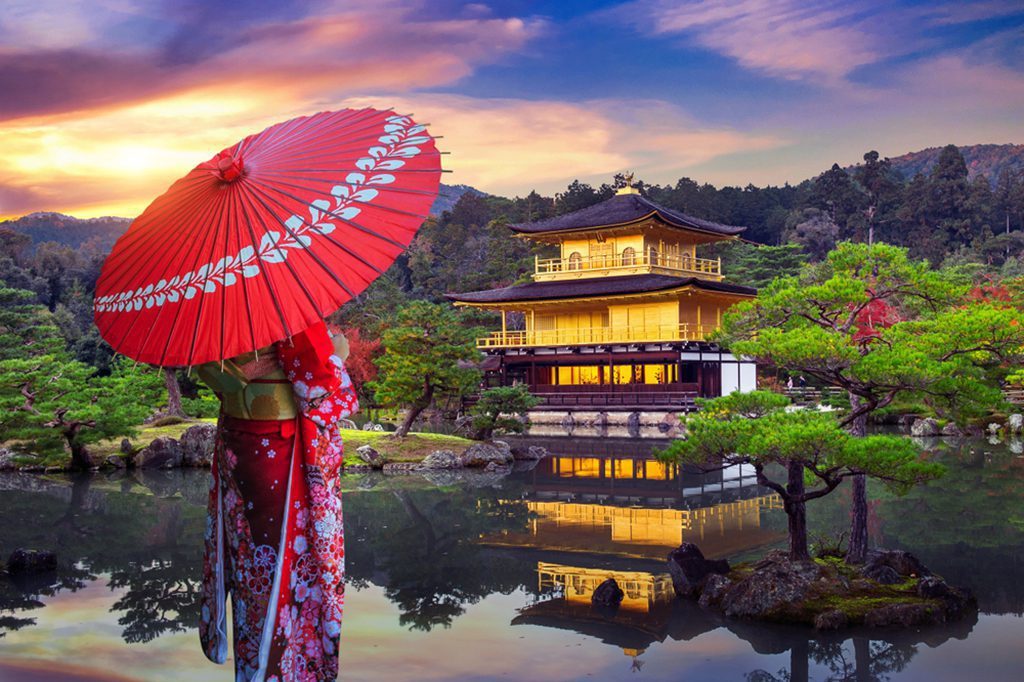For those looking to take a vacation, Japan is a top choice. Many ancient structures, like temples, coexist alongside state-of-the-art hotels and skyscrapers, creating a fascinating synthesis of the past and the present. On the one hand, tourists can experience traditional Japanese culture, while on the other, they can learn about cutting-edge technical advancements in Japan.
Nearly all of the historic locations serve their original roles while also being accessible to the general public. This country’s natural splendor is on full display throughout the year. Another reason why Japan is a great destination is that it has one of the world’s lowest crime rates. A rundown of Japan’s most popular sights:
10. Hiroshima Peace Memorial
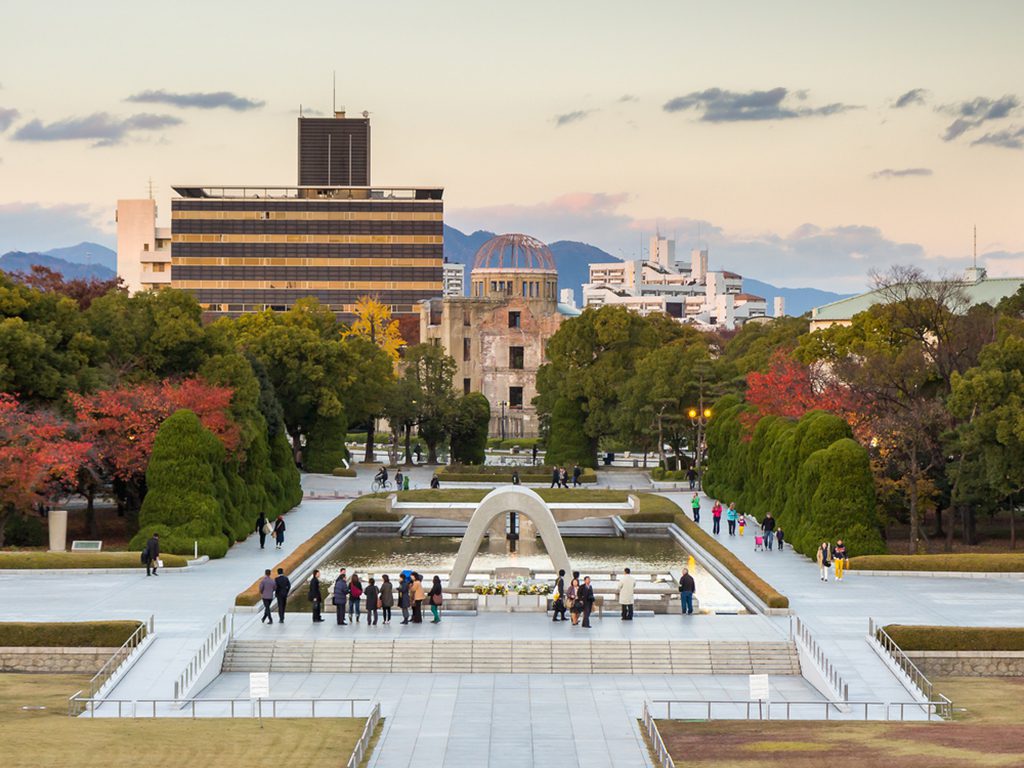
There is a terrible memorial to the victims of the atomic bombing of Hiroshima on August 6, 1945, and it is called the Hiroshima Peace Memorial. The park-like monument incorporates Genbaku Dome, the last surviving structure in the area following the bombing. The visitors are reminded of the value of human life, and the victims are honored so that they will never be forgotten by this stark depiction of a world at war.
9. Jigokudani Monkey Park
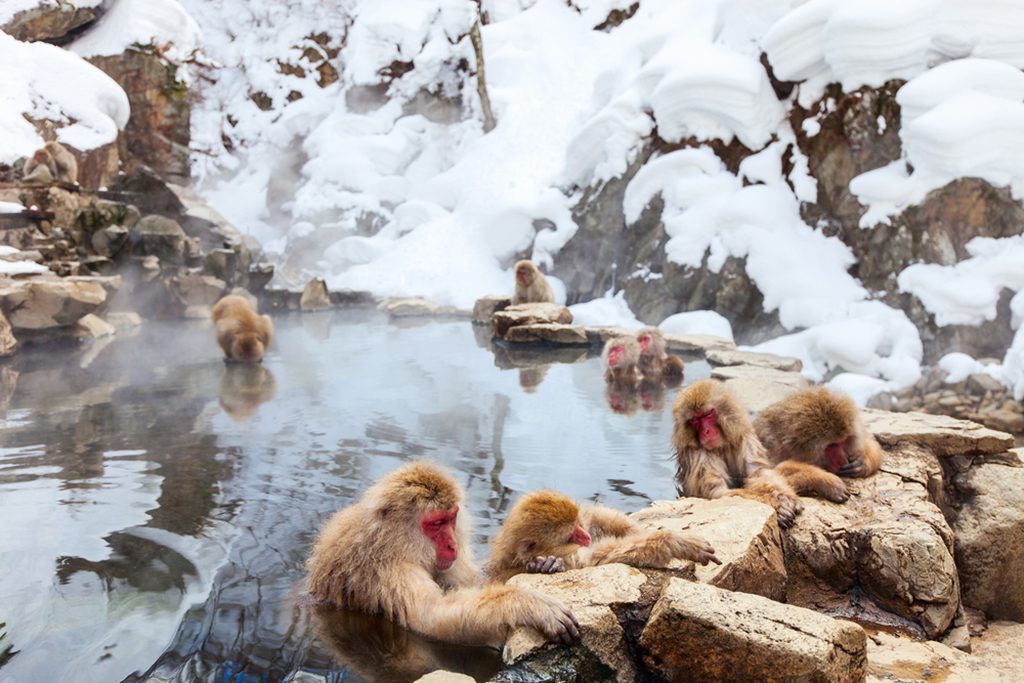
Adorable Snow Monkeys enjoying a relaxing bath in the hot springs of Nagano, Japan. Image source: BlueOrange Studio/Shutterstock.com
The Jigokudani Monkey Park is a popular hot springs destination not far from Nagano. Jigokudani, or “Hell’s Valley,” is so named because steam and boiling water pour out of the frozen ground in this valley, surrounded by towering cliffs and foreboding icy forests. In the winter, when the park is covered in snow, the valley becomes a popular refuge for a huge population of free-roaming Snow Monkeys. The monkeys come down from the high cliffs and forests to relax in the hot springs during the day, then retreat to the safety of the forest at night.
8. Kiyomizu-dera
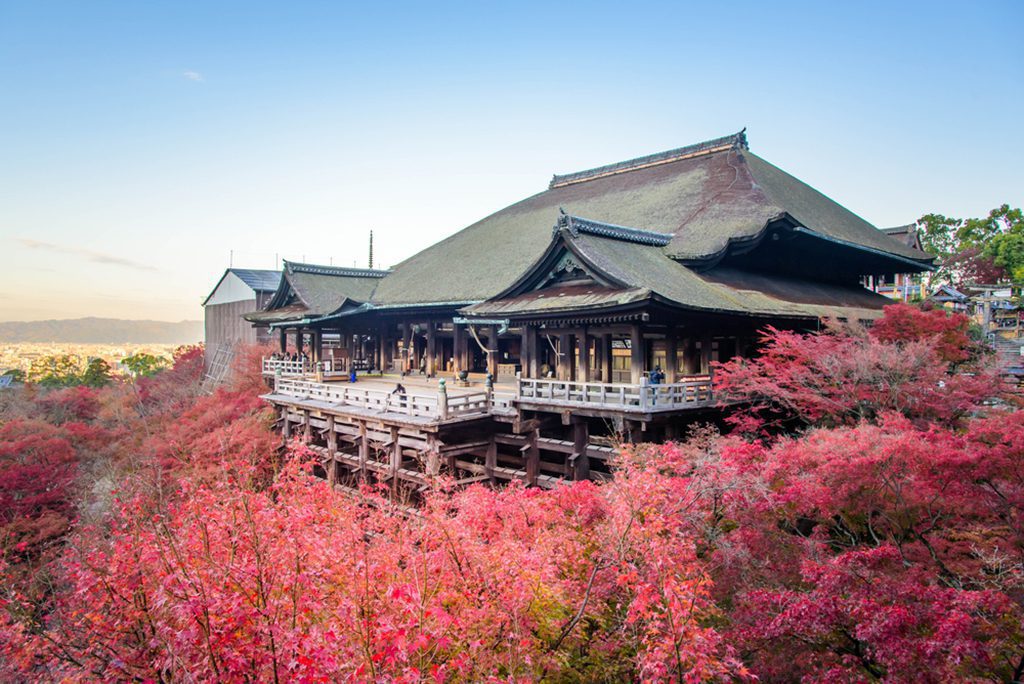
Majestic Kiyomizu Temple surrounded by vibrant autumn colors. Image source: THANACHAI SRISAI/Shutterstock.com
Majestic Kiyomizu Temple surrounded by vibrant autumn colors. Image source: THANACHAI SRISAI/Shutterstock.com
Kiyomizu-dera is a Buddhist temple in eastern Kyoto with a history dating back to 798. No nails were used in the building of this temple, which instead relies on an inside waterfall that is supplied by a river outside. Visitors now can appreciate the shrines, talismans, and artwork without having to risk their lives by jumping from the cliff as the natives used to (they had an 85.4 percent chance of surviving).
7. Himeji Castle
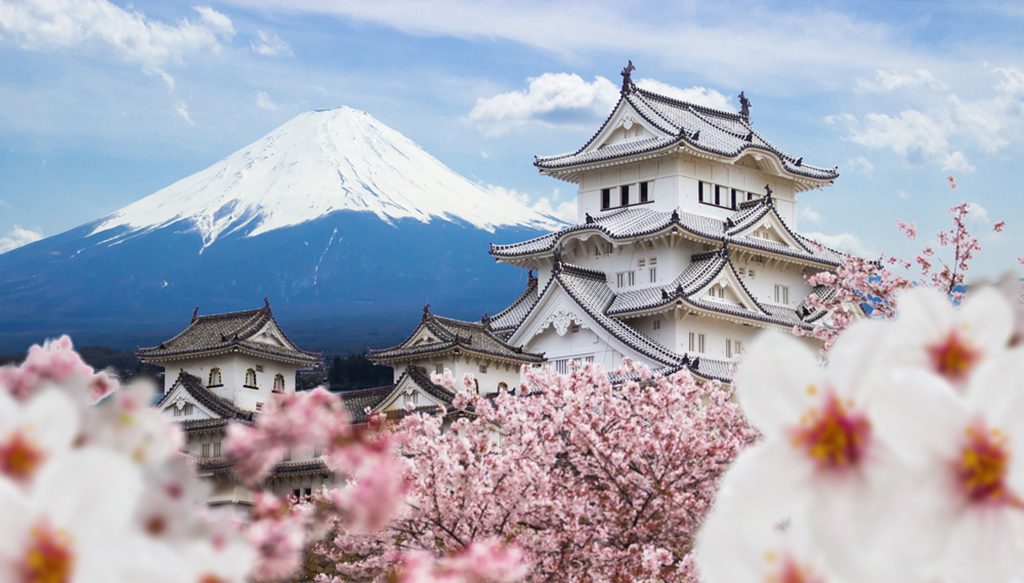
Stunning Himeji Castle surrounded by full cherry blossoms, with Mount Fuji in the background. Image source: TNShutter/Shutterstock.com
It is widely agreed that Himeji Castle represents the pinnacle of Japanese castle architecture. It was fortified during the feudal period to protect against invaders, but it has been renovated several times over the years, and its appearance now represents the styles of various eras. It was spared during World War II’s bombardment and has since appeared in several Hollywood and international films, including the 2002 James Bond thriller “You Only Live Twice.” With its all-white facade and graceful shape, the term “white egret castle” is often used to refer to this structure.
6. Great Buddha of Kamakura
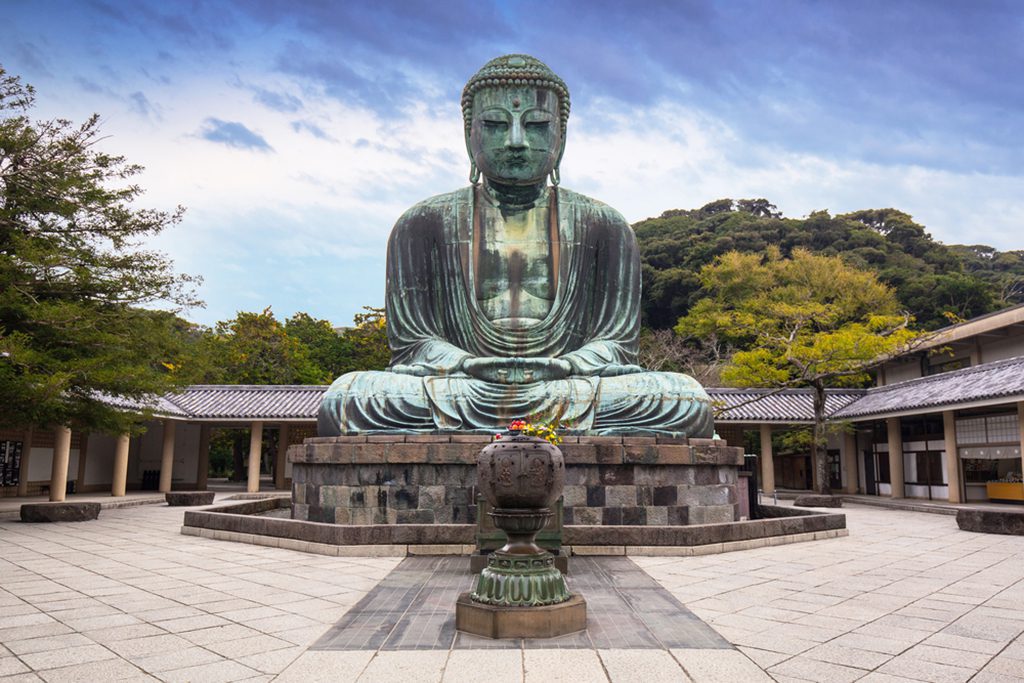
Monumental bronze statue of the Great Buddha in Kamakura. Image source: Patryk Kosmider/Shutterstock.com
One of Japan’s most revered Buddhist icons, Amida Buddha, is shown in massive detail at the Great Buddha of Kamakura. The Great Buddha is about 13 meters (40 feet) tall and weighs approximately 93 tons since it is cast in bronze. This statue was supposedly built in 1252. The Great Buddha used to be kept in a small wooden temple, but when it was destroyed by a tsunami in the 15th century, it was moved out into the open.
5. Todaiji Temple
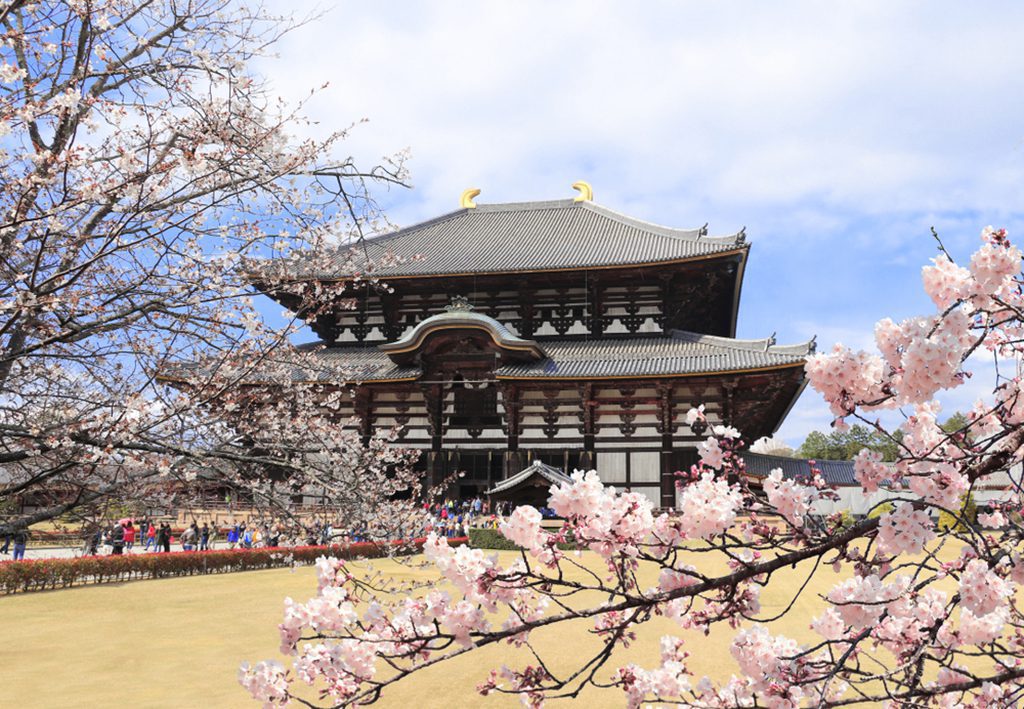
Majestic Todaiji Temple, one of the Seven Great Temples, in Nara. Image source: FrentaN/Shutterstock.com
An engineering marvel, the Todaiji Temple in Nara is a must-see for every visitor. Aside from being the biggest wooden building ever constructed, it also houses the largest bronze Buddha statue ever created. The Kegon school of Buddhism is centered here, and the grounds are home to significant cultural and historical items from Japan and the Buddhist world. To honor the Shinto gods, deer are free to explore the grounds as they like.
4. Tokyo Tower
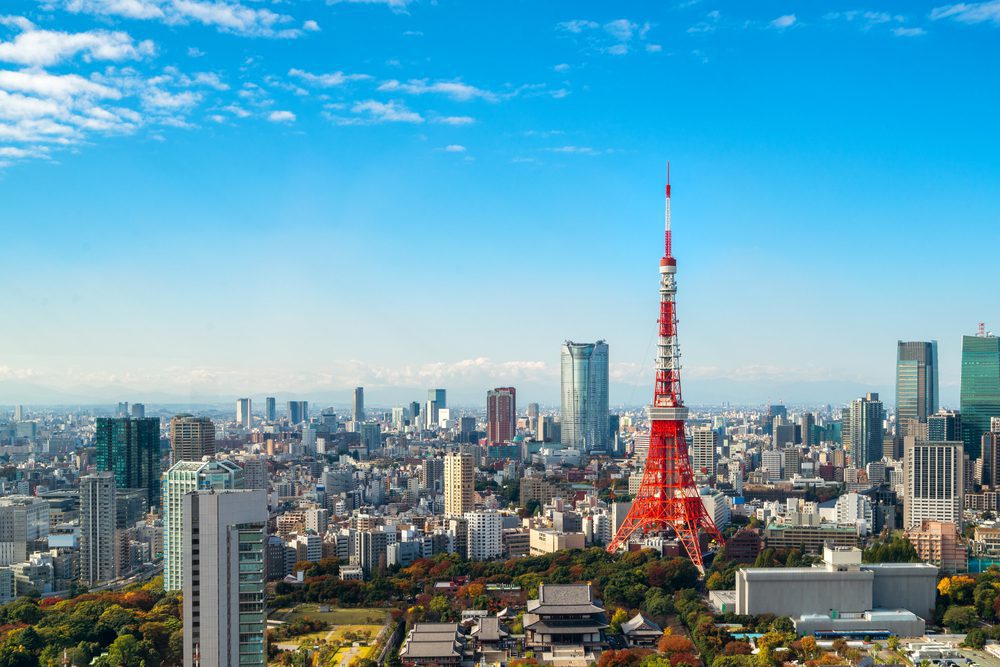
Iconic Tokyo Tower rising above the city skyline. Image source: Blue Planet Studio/Shutterstock.com
Modernity and technological progress are on full display at the Tokyo Tower. It is the second-tallest man-made structure in Japan and was inspired by the Eiffel Tower in terms of both form and function. You can shop and dine at the tower’s many establishments, and you can also ascend to the observation deck for spectacular views of Tokyo and the surrounding region.
3. Tokyo Imperial Palace
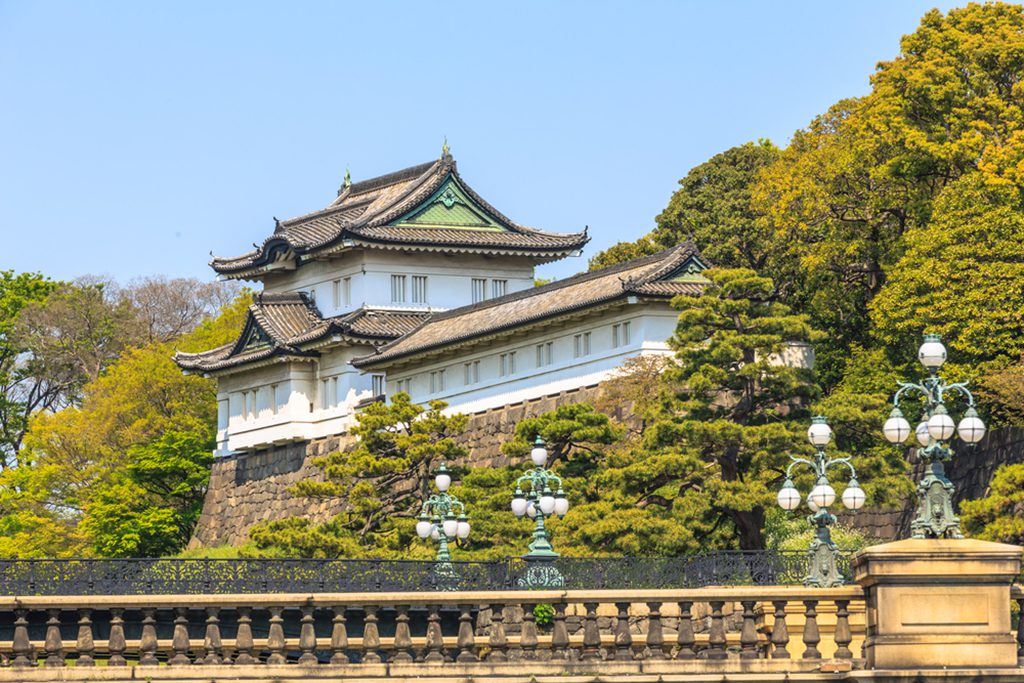
Serene Tokyo Imperial Palace, residence of the Emperor of Japan. Image source: Tooykrub/Shutterstock.com
At the Tokyo Imperial Palace, the Emperor of Japan resides. It’s not only a place to run government affairs out of, but also a museum showcasing Japanese culture and history. Built on the sites of previous castles that were destroyed by fire or conflict, this structure is a respectful homage to its predecessors. The new palace has several reception and event rooms, as well as traditional Japanese gardens.
2. Mount Fuji
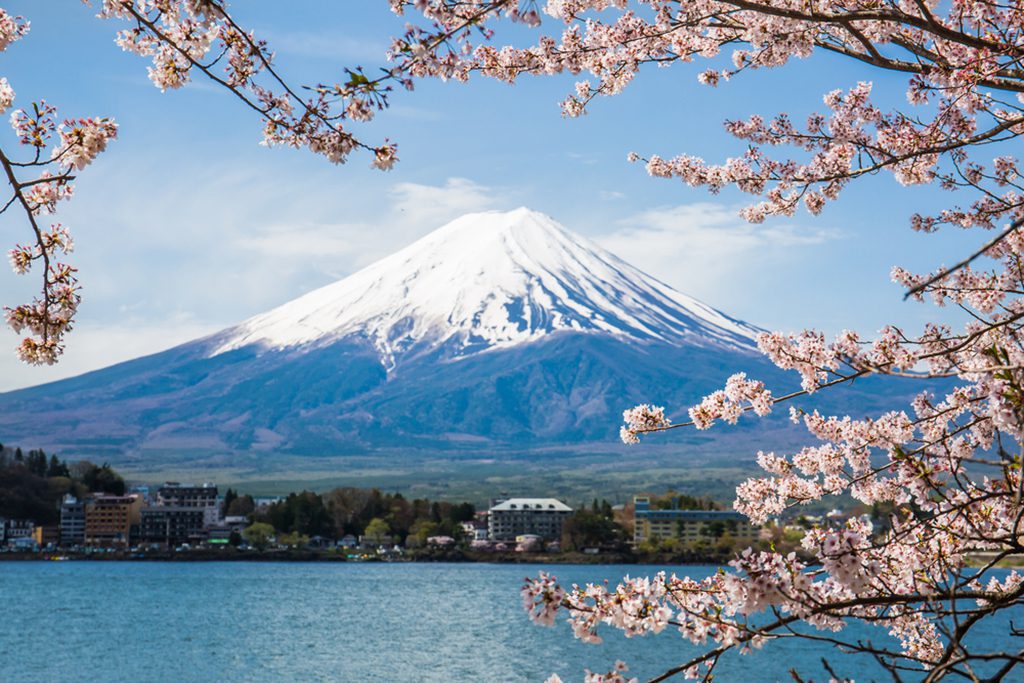
Majestic Mount Fuji framed by vibrant cherry blossoms at Lake Kawaguchiko. Image source: Aeypix/Shutterstock.com
The 3,776-meter-high Mount Fuji stands as Japan’s tallest peak (12,388 ft). The uniquely symmetrical volcano’s cone serves as a popular landmark for sightseers and mountaineers and as a symbol of Japan in art and photography. Around 200,000 people a year, 30% of whom are not Japanese, make the ascent of Mount Fuji. It could take three to eight hours to make the climb and two to five hours to make the descent.
1. Golden Pavilion
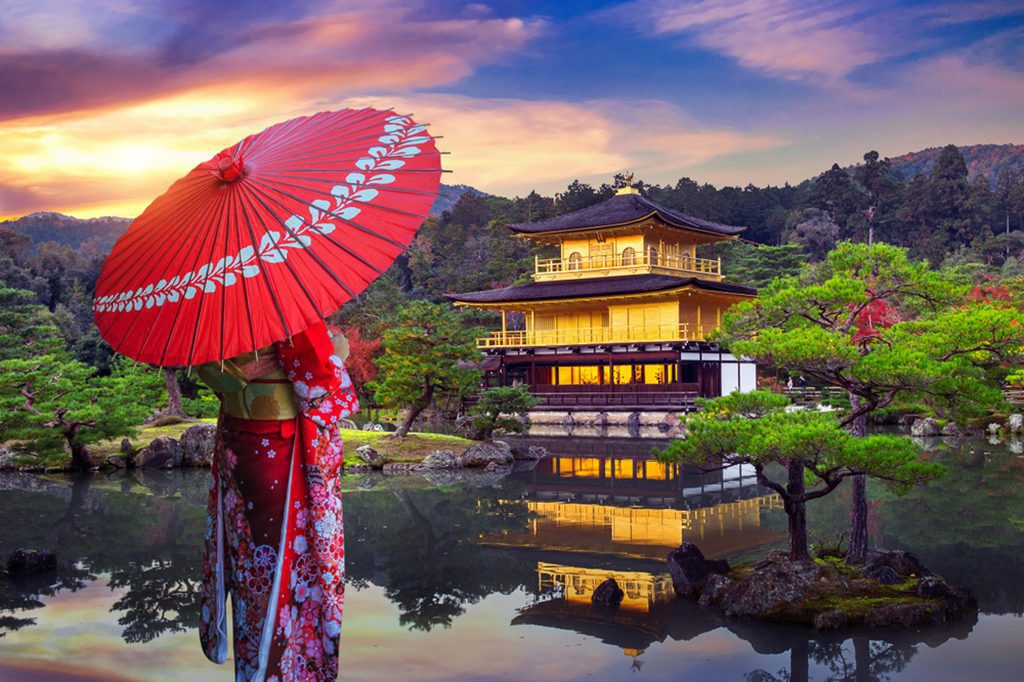
Graceful Asian woman dressed in a traditional kimono at the enchanting Kinkakuji Temple. Image source: Guitar photographer/Shutterstock.com
The Golden Pavilion Temple (Kinkaku-ji) in Kyoto draws more visitors than any other site in Japan. It was initially constructed as a retirement residence for Shogun Ashikaga Yoshimitsu in the late 14th century. In 1950, a young monk who had grown infatuated with the pavilion burned it down. After five years, a replica of the original temple was built. The structure and its landscape are designed to work in tandem with one another. The pavilion’s gold leaf treatment brings out the best in both the building’s reflection in the pond and the water itself.


